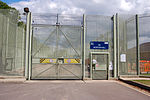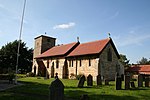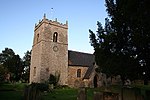Tunman Wood
Forests and woodlands of LincolnshireLincolnshire Wildlife TrustLocal Nature Reserves in LincolnshireTourist attractions in LincolnshireUse British English from February 2020

Tunman Wood is a local nature reserve with an area of over 53 ha (130 acres) located near Eagle Barnsdale, Lincolnshire. It is an area of ancient woodland and has existed since at least 1774. It was used by the Forestry Commission from the 1940s until it was purchased by Lincolnshire County Council, North Kesteven District Council and Lincolnshire Wildlife Trust from Lafarge Aggregates in February 2009.
Excerpt from the Wikipedia article Tunman Wood (License: CC BY-SA 3.0, Authors, Images).Tunman Wood
North Kesteven Eagle and Swinethorpe
Geographical coordinates (GPS) Address Nearby Places Show on map
Geographical coordinates (GPS)
| Latitude | Longitude |
|---|---|
| N 53.179186 ° | E -0.67126478 ° |
Address
Crossing Farm
LN6 9DY North Kesteven, Eagle and Swinethorpe
England, United Kingdom
Open on Google Maps










